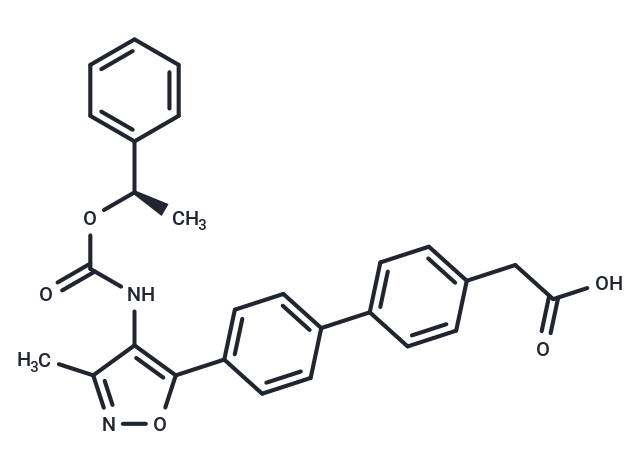Shopping Cart
Remove All Your shopping cart is currently empty
Your shopping cart is currently empty
AM095 (free acid) is a potent LPA1 receptor antagonist with IC50 values of 0.98 μM for recombinant human LPA1 and 0.73 μM for recombinant mouse LPA1.

| Pack Size | Price | USA Warehouse | Global Warehouse | Quantity |
|---|---|---|---|---|
| 1 mg | $30 | In Stock | In Stock | |
| 5 mg | $61 | In Stock | In Stock | |
| 10 mg | $98 | In Stock | In Stock | |
| 25 mg | $189 | In Stock | In Stock | |
| 50 mg | $297 | In Stock | In Stock | |
| 100 mg | $463 | In Stock | In Stock | |
| 200 mg | $695 | - | In Stock | |
| 1 mL x 10 mM (in DMSO) | $67 | In Stock | In Stock |
| Description | AM095 (free acid) is a potent LPA1 receptor antagonist with IC50 values of 0.98 μM for recombinant human LPA1 and 0.73 μM for recombinant mouse LPA1. |
| Targets&IC50 | LPA1 (human):0.98 μM , LPA1 (mouse):0.73 μM |
| In vitro | In vitro, AM095 was a potent LPA receptor antagonist because it inhibited GTPγS binding to Chinese hamster ovary (CHO) cell membranes overexpressing recombinant human or mouse LPA with IC values of 0.98 and 0.73 μM, respectively, and exhibited no LPA agonism. In functional assays, AM095 inhibited LPA-driven chemotaxis of CHO cells overexpressing mouse LPA (IC = 778 nM) and human A2058 melanoma cells (IC = 233 nM)[3]. |
| In vivo | In vivo, AM095: 1) had high oral bioavailability and a moderate half-life and was well tolerated at the doses tested in rats and dogs after oral and intravenous dosing, 2) dose-dependently reduced LPA-stimulated histamine release, 3) attenuated bleomycin-induced increases in collagen, protein, and inflammatory cell infiltration in bronchalveolar lavage fluid, and 4) decreased kidney fibrosis in a mouse unilateral ureteral obstruction model[3]. |
| Molecular Weight | 456.49 |
| Formula | C27H24N2O5 |
| Cas No. | 1228690-36-5 |
| Smiles | C[C@@H](OC(=O)Nc1c(C)noc1-c1ccc(cc1)-c1ccc(CC(O)=O)cc1)c1ccccc1 |
| Relative Density. | 1.278 g/cm3 (Predicted) |
| Storage | Powder: -20°C for 3 years | In solvent: -80°C for 1 year | Shipping with blue ice/Shipping at ambient temperature. | |||||||||||||||||||||||||||||||||||
| Solubility Information | DMSO: 67.3 mg/mL (147.43 mM), Sonication and heating are recommended. | |||||||||||||||||||||||||||||||||||
| In Vivo Formulation | 10% DMSO+90% Corn Oil: 2.5 mg/mL (5.48 mM), Sonication is recommeded. Please add the solvents sequentially, clarifying the solution as much as possible before adding the next one. Dissolve by heating and/or sonication if necessary. Working solution is recommended to be prepared and used immediately. The formulation provided above is for reference purposes only. In vivo formulations may vary and should be modified based on specific experimental conditions. | |||||||||||||||||||||||||||||||||||
Solution Preparation Table | ||||||||||||||||||||||||||||||||||||
DMSO
| ||||||||||||||||||||||||||||||||||||
| Size | Quantity | Unit Price | Amount | Operation |
|---|

Copyright © 2015-2025 TargetMol Chemicals Inc. All Rights Reserved.